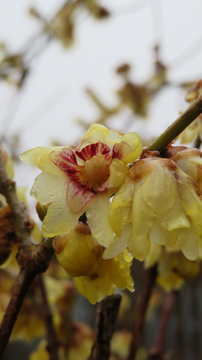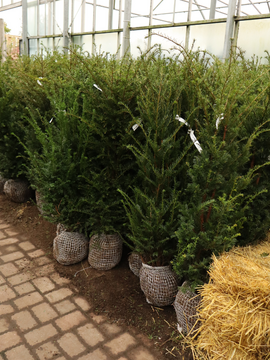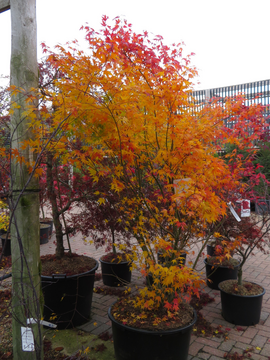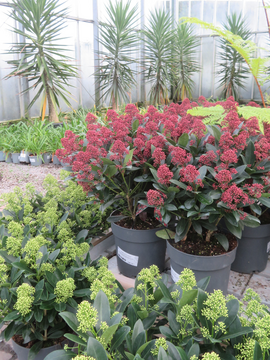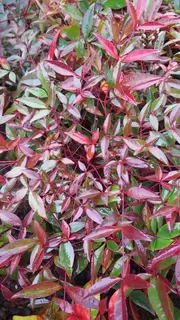
Nandina have come on in leaps and bounds in the last few years with some excellent new varieties available that really zing with winter colour.
Taking on great colour as the weather gets colder Nandina are often overlooked as a colourful winter interest plant – such a shame – they have so much to offer.
Nandina are very versatile plants and are great for use in containers, borders and in Japanese style plantings. The foliage on the whole is fine with the odd exception to the rule. There is a lot to like about Nandina – white flower sin spring, excellent all year round changing foliage colour and great compact growth. All change colour in the colder months making them a great addition to any border needing winter interest.
Happy in sun or partial shade in a neutral to slightly acidic soil. They do benefit from a mulch every year and prefer a well-drained soil.
• domestica Blush Pink - new growth that emerges pink and stays pink, becoming red in the autumn and red colour in the autumn. Height 50cm
• domestica Fire Power - a dwarf variety with yellow green foliage in the summer months that turn a vibrant orange-red in the winter months
• domestica Flirt (Murasaki) The new growth is dramatic deep red in colour and fades to green in the colder months. A very compact shrub reaching 50cm in height overall
• domestica Gulf Stream - bronze foliage in the spring with a slight orange hue. Height 80-100cm
• domestica Obsessed - leaves that emerge bright red in the spring, age to green in the summer and read again in the autumn colours. Height 80-100cm
• domestica Twilight – rather surprisingly subtle white variegation and a pink flush in the spring. Height 1.2m
• domestica Woods Dwarf - A compact, upright evergreen shrub reaching 60cm in height. This Nandina has leaves that turn reddish- purple in the autumn. White star-shaped flowers are produced and followed by red berries held throughout the winter months

